
Homebuilder KB Home (NYSE: KBH) beat Wall Street’s revenue expectations in Q4 CY2024, with sales up 19.5% year on year to $2 billion. On the other hand, the company’s full-year revenue guidance of $7.25 billion at the midpoint came in 1.1% below analysts’ estimates. Its GAAP profit of $2.52 per share was 3.2% above analysts’ consensus estimates.
Is now the time to buy KB Home? Find out by accessing our full research report, it’s free.
KB Home (KBH) Q4 CY2024 Highlights:
- Revenue: $2 billion vs analyst estimates of $1.98 billion (19.5% year-on-year growth, 0.8% beat)
- Adjusted EPS: $2.52 vs analyst estimates of $2.44 (3.2% beat)
- Adjusted EBITDA: $239 million vs analyst estimates of $286.5 million (12% margin, 16.6% miss)
- Management’s revenue guidance for the upcoming financial year 2025 is $7.25 billion at the midpoint, missing analyst estimates by 1.1% and implying 4.6% growth (vs 8.2% in FY2024)
- Operating Margin: 11.5%, in line with the same quarter last year
- Backlog: $2.24 billion at quarter end, down 15.9% year on year
- Market Capitalization: $4.63 billion
“We had a strong finish to 2024, with significant year-over-year growth in our fourth-quarter revenues and diluted earnings per share. Our higher revenues reflected an increase in deliveries, which were driven by faster build times. Net orders rose roughly 40% year over year, as buyers continued to demonstrate a desire for homeownership and housing market conditions improved relative to last year, despite ongoing mortgage interest rate headwinds,” said Jeffrey Mezger, Chairman and Chief Executive Officer.
Company Overview
The first homebuilder to be listed on the NYSE, KB Home (NYSE: KB) is a homebuilding company targeting the first-time home buyer and move-up buyer markets.
Home Builders
Traditionally, homebuilders have built competitive advantages with economies of scale that lead to advantaged purchasing and brand recognition among consumers. Aesthetic trends have always been important in the space, but more recently, energy efficiency and conservation are driving innovation. However, these companies are still at the whim of the macro, specifically interest rates that heavily impact new and existing home sales. In fact, homebuilders are one of the most cyclical subsectors within industrials.
Sales Growth
A company’s long-term sales performance signals its overall quality. Even a bad business can shine for one or two quarters, but a top-tier one grows for years. Over the last five years, KB Home grew its sales at a decent 8.8% compounded annual growth rate. Its growth was slightly above the average industrials company and shows its offerings resonate with customers.
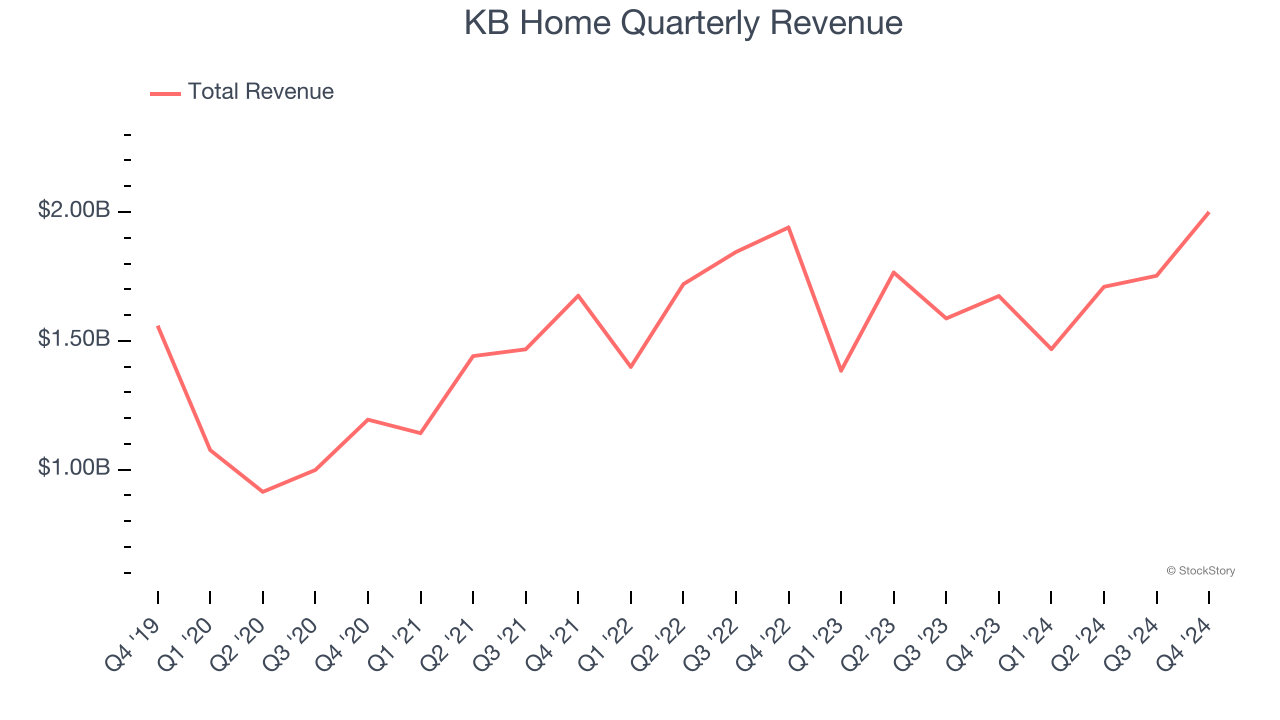
Long-term growth is the most important, but within industrials, a half-decade historical view may miss new industry trends or demand cycles. KB Home’s recent history shows its demand slowed as its revenue was flat over the last two years. 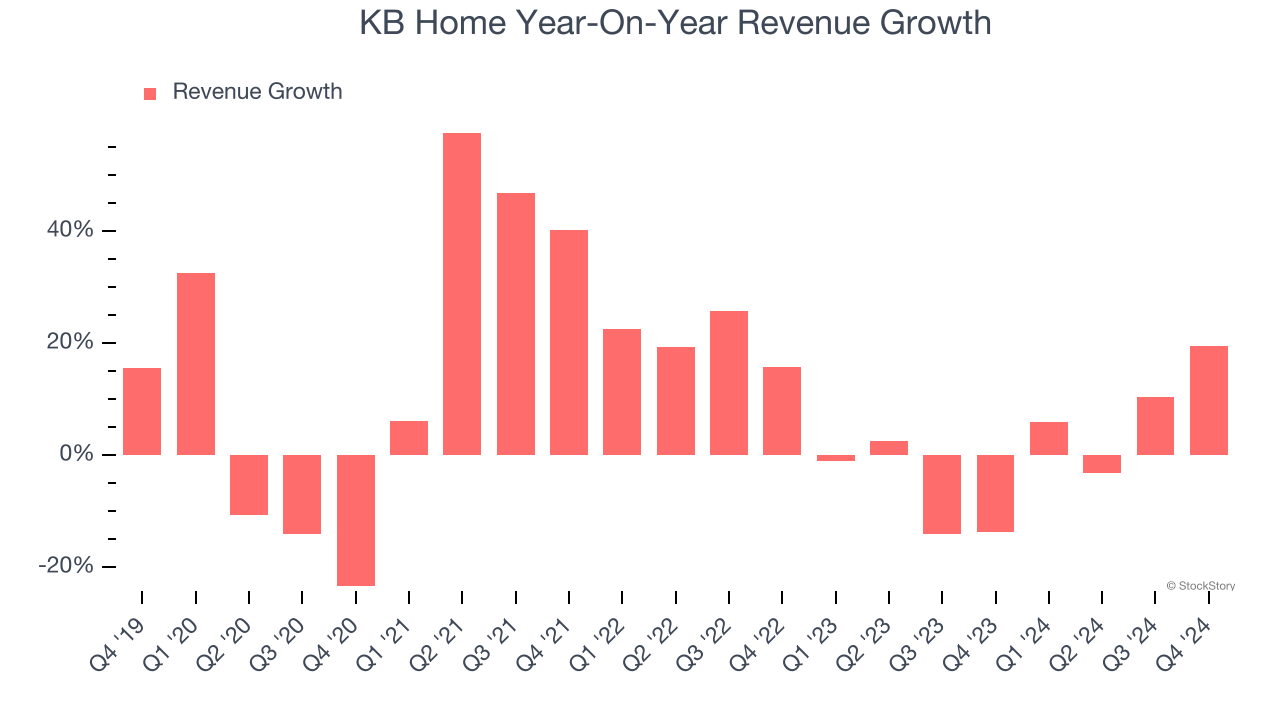
We can better understand the company’s revenue dynamics by analyzing its backlog, or the value of its outstanding orders that have not yet been executed or delivered. KB Home’s backlog reached $2.24 billion in the latest quarter and averaged 25.5% year-on-year declines over the last two years. Because this number is lower than its revenue growth, we can see the company hasn’t secured enough new orders to maintain its growth rate in the future. 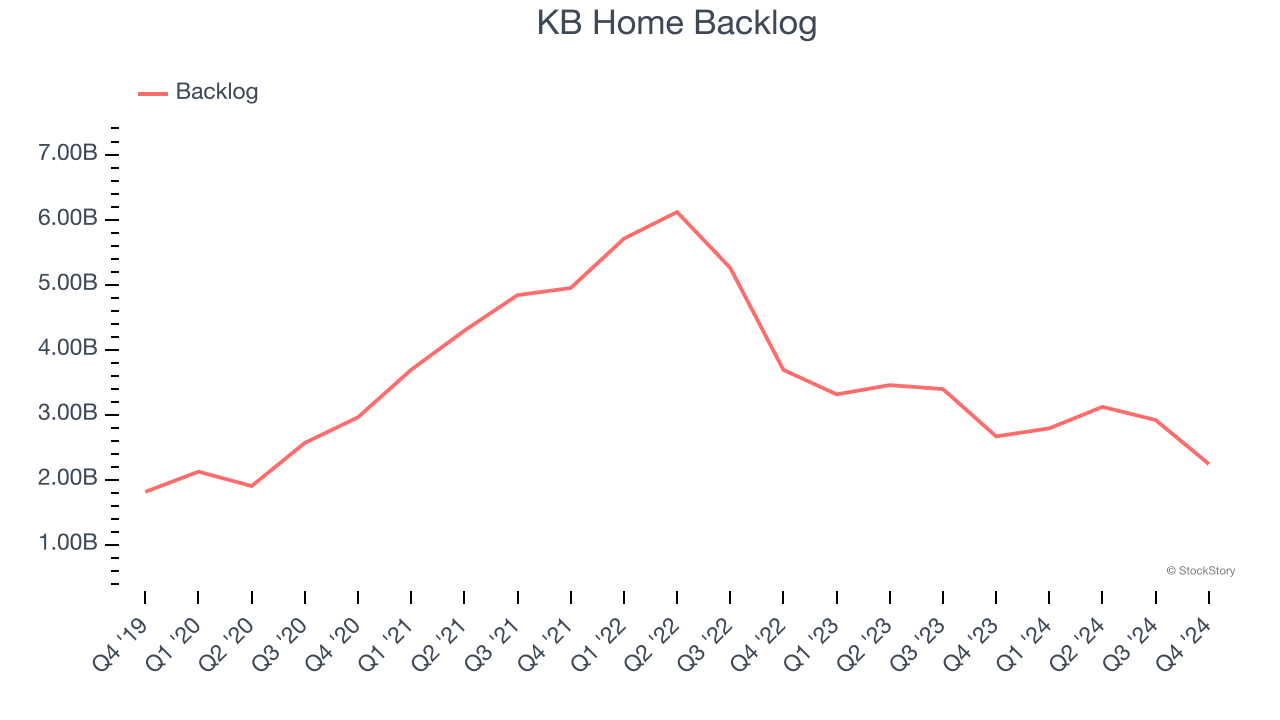
This quarter, KB Home reported year-on-year revenue growth of 19.5%, and its $2 billion of revenue exceeded Wall Street’s estimates by 0.8%.
Looking ahead, sell-side analysts expect revenue to grow 6.6% over the next 12 months. Although this projection implies its newer products and services will fuel better top-line performance, it is still below average for the sector.
Unless you’ve been living under a rock, it should be obvious by now that generative AI is going to have a huge impact on how large corporations do business. While Nvidia and AMD are trading close to all-time highs, we prefer a lesser-known (but still profitable) stock benefiting from the rise of AI. Click here to access our free report one of our favorites growth stories.
Operating Margin
KB Home has been an optimally-run company over the last five years. It was one of the more profitable businesses in the industrials sector, boasting an average operating margin of 11.9%. This result was particularly impressive because of its low gross margin, which is mostly a factor of what it sells and takes huge shifts to move meaningfully. Companies have more control over their operating margins, and it’s a show of well-managed operations if they’re high when gross margins are low.
Looking at the trend in its profitability, KB Home’s operating margin rose by 3.4 percentage points over the last five years, as its sales growth gave it operating leverage.
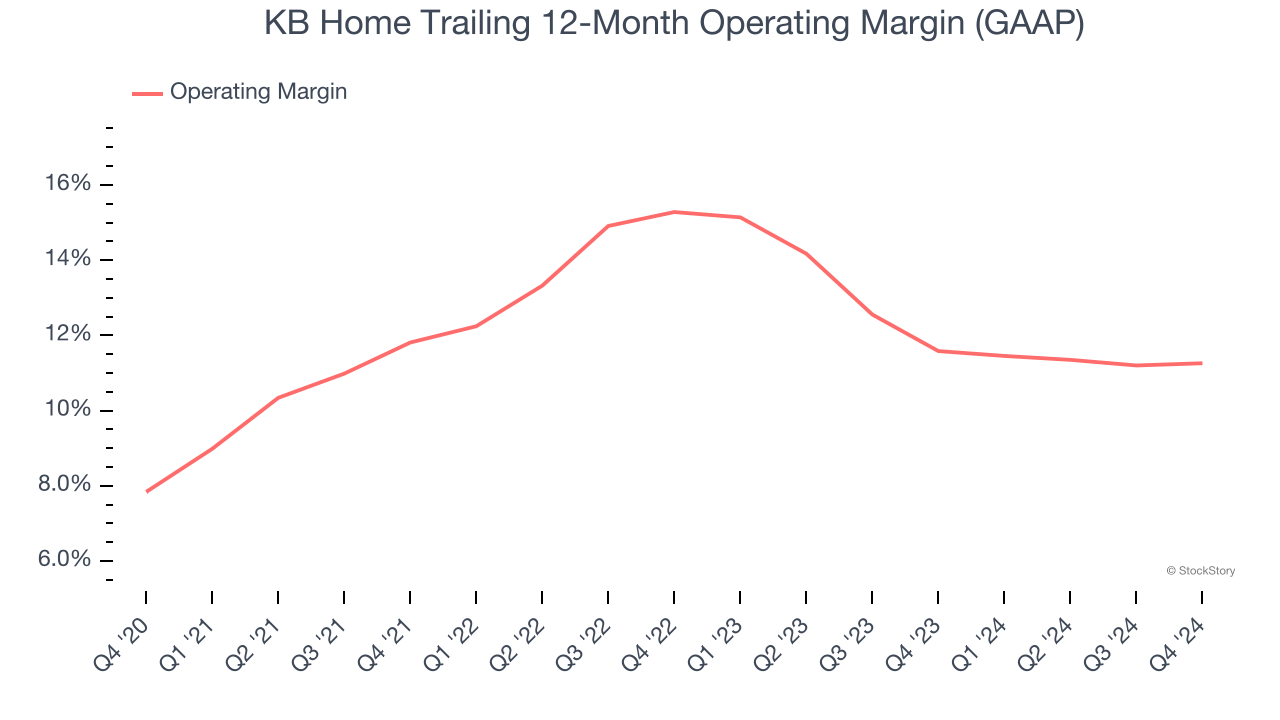
In Q4, KB Home generated an operating profit margin of 11.5%, in line with the same quarter last year. This indicates the company’s cost structure has recently been stable.
Earnings Per Share
We track the long-term change in earnings per share (EPS) for the same reason as long-term revenue growth. Compared to revenue, however, EPS highlights whether a company’s growth is profitable.
KB Home’s EPS grew at an astounding 24.4% compounded annual growth rate over the last five years, higher than its 8.8% annualized revenue growth. This tells us the company became more profitable on a per-share basis as it expanded.
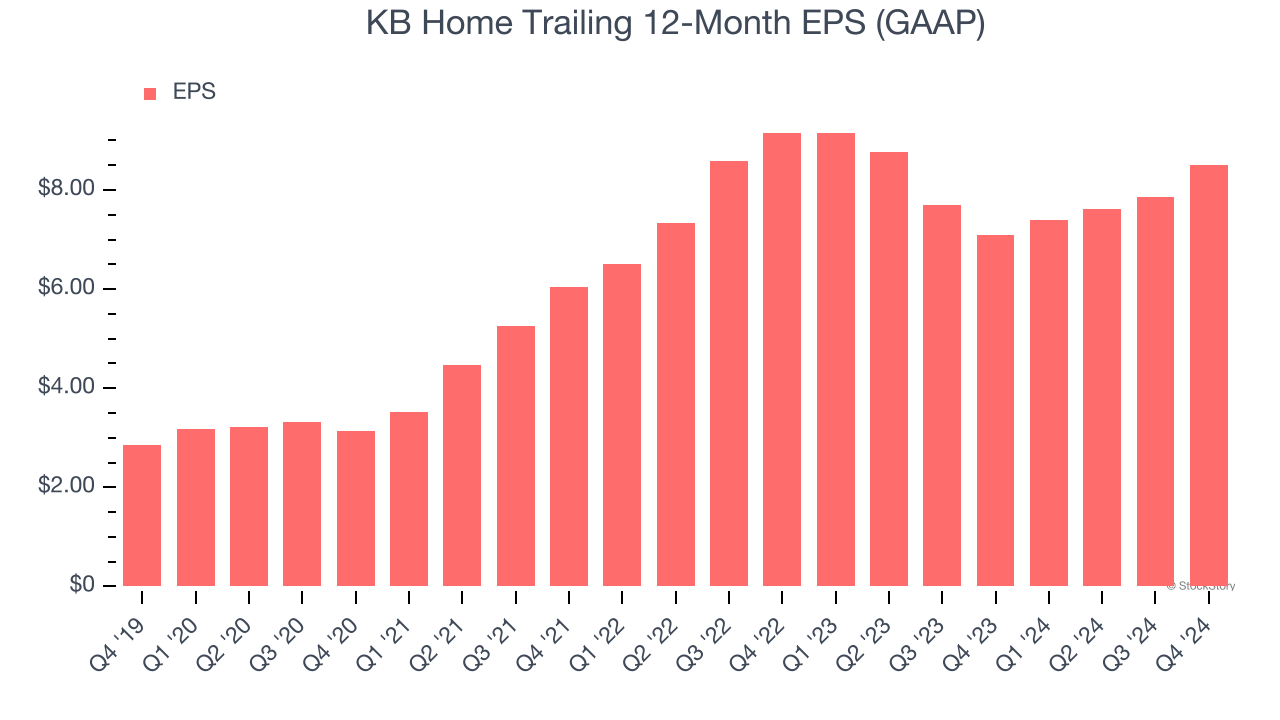
We can take a deeper look into KB Home’s earnings to better understand the drivers of its performance. As we mentioned earlier, KB Home’s operating margin was flat this quarter but expanded by 3.4 percentage points over the last five years. On top of that, its share count shrank by 19.8%. These are positive signs for shareholders because improving profitability and share buybacks turbocharge EPS growth relative to revenue growth. 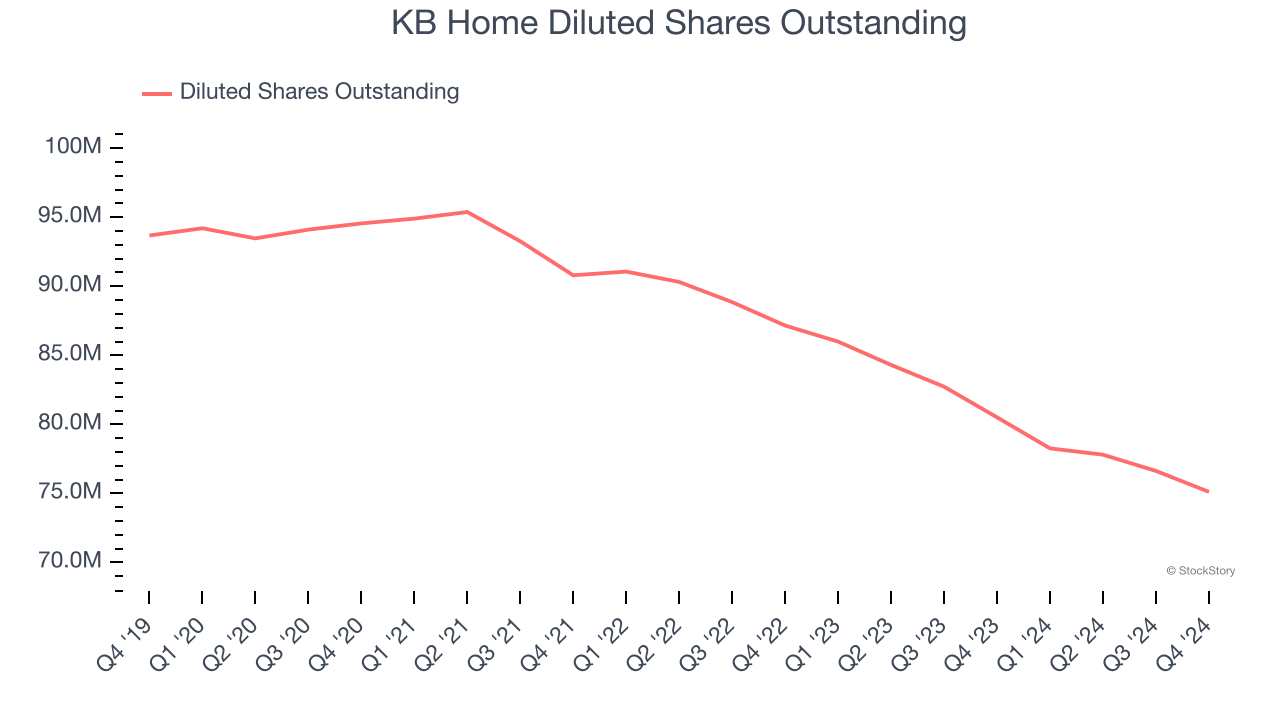
Like with revenue, we analyze EPS over a more recent period because it can provide insight into an emerging theme or development for the business.
For KB Home, its two-year annual EPS declines of 3.6% mark a reversal from its (seemingly) healthy five-year trend. We hope KB Home can return to earnings growth in the future.In Q4, KB Home reported EPS at $2.52, up from $1.87 in the same quarter last year. This print beat analysts’ estimates by 3.2%. Over the next 12 months, Wall Street expects KB Home’s full-year EPS of $8.51 to grow 2.4%.
Key Takeaways from KB Home’s Q4 Results
We enjoyed seeing KB Home exceed analysts’ backlog expectations this quarter, as this figure is a leading indicator of revenue and a major focus of the markets. We were also happy its revenue narrowly outperformed Wall Street’s estimates. Management made constructive comments about the macro, noting that "Net orders rose roughly 40% year over year, as buyers continued to demonstrate a desire for homeownership and housing market conditions improved relative to last year". On the other hand, its EBITDA missed and its full-year revenue guidance fell slightly short of Wall Street’s estimates. Zooming out, we think this was a mixed quarter. The market seemed to focus on the topline strength, and the stock traded up 8.2% to $69.38 immediately following the results.
Is KB Home an attractive investment opportunity at the current price? When making that decision, it’s important to consider its valuation, business qualities, as well as what has happened in the latest quarter. We cover that in our actionable full research report which you can read here, it’s free.





